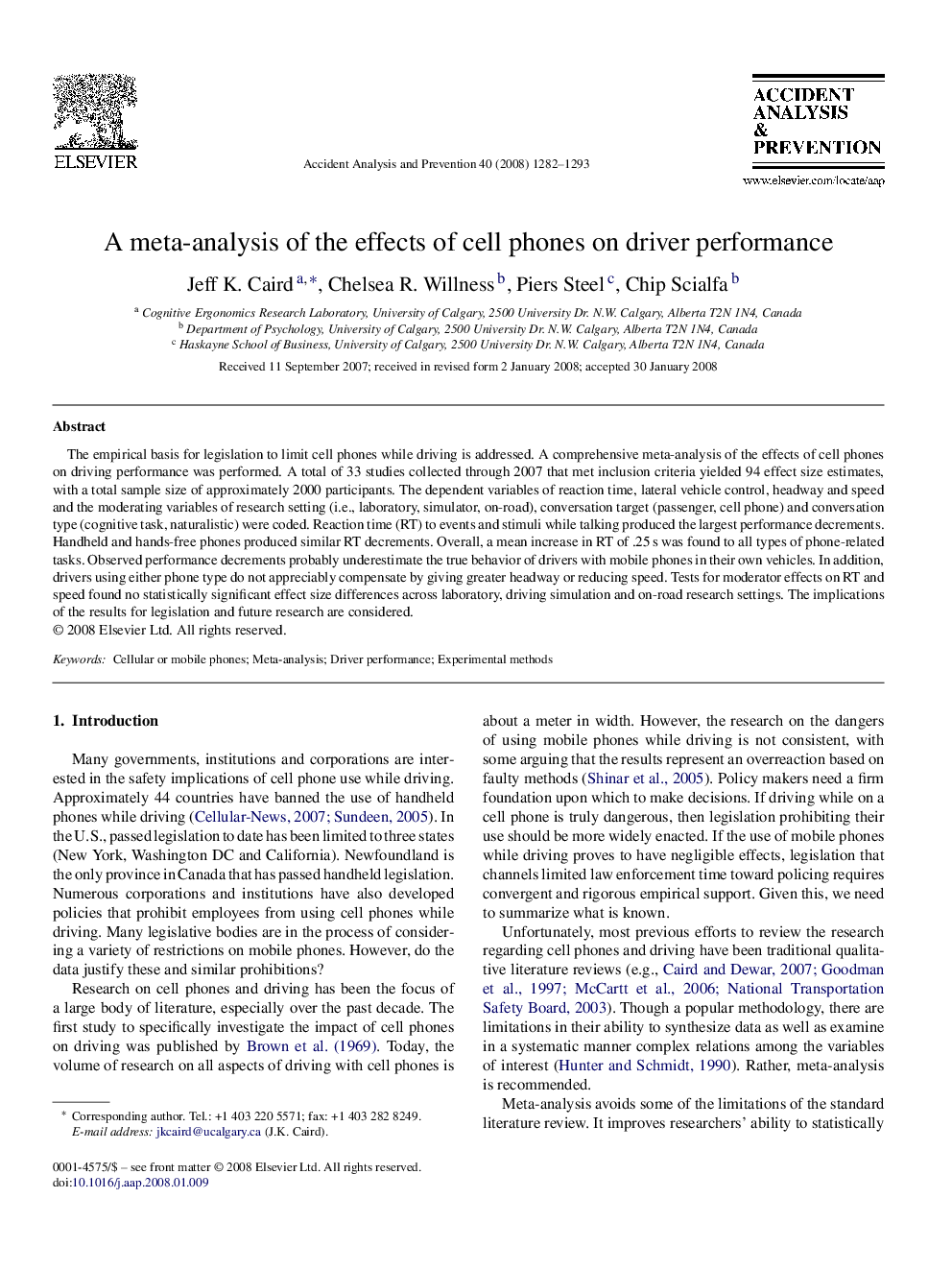| Article ID | Journal | Published Year | Pages | File Type |
|---|---|---|---|---|
| 573590 | Accident Analysis & Prevention | 2008 | 12 Pages |
The empirical basis for legislation to limit cell phones while driving is addressed. A comprehensive meta-analysis of the effects of cell phones on driving performance was performed. A total of 33 studies collected through 2007 that met inclusion criteria yielded 94 effect size estimates, with a total sample size of approximately 2000 participants. The dependent variables of reaction time, lateral vehicle control, headway and speed and the moderating variables of research setting (i.e., laboratory, simulator, on-road), conversation target (passenger, cell phone) and conversation type (cognitive task, naturalistic) were coded. Reaction time (RT) to events and stimuli while talking produced the largest performance decrements. Handheld and hands-free phones produced similar RT decrements. Overall, a mean increase in RT of .25 s was found to all types of phone-related tasks. Observed performance decrements probably underestimate the true behavior of drivers with mobile phones in their own vehicles. In addition, drivers using either phone type do not appreciably compensate by giving greater headway or reducing speed. Tests for moderator effects on RT and speed found no statistically significant effect size differences across laboratory, driving simulation and on-road research settings. The implications of the results for legislation and future research are considered.
